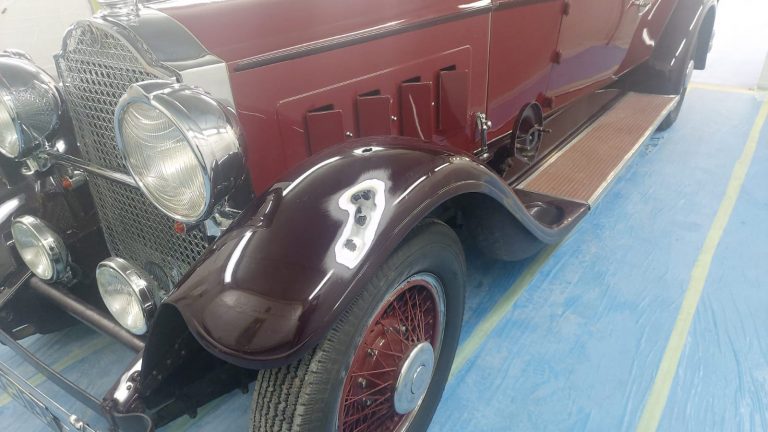
Delicate Work – Paint Repairs on the 1930 Packard 740 Waterfield Convertible
It’s always a pleasure to work on cars like the 1930 Packard 740. This particular Packard has been awaiting some specialist parts from the US


It’s always a pleasure to work on cars like the 1930 Packard 740. This particular Packard has been awaiting some specialist parts from the US
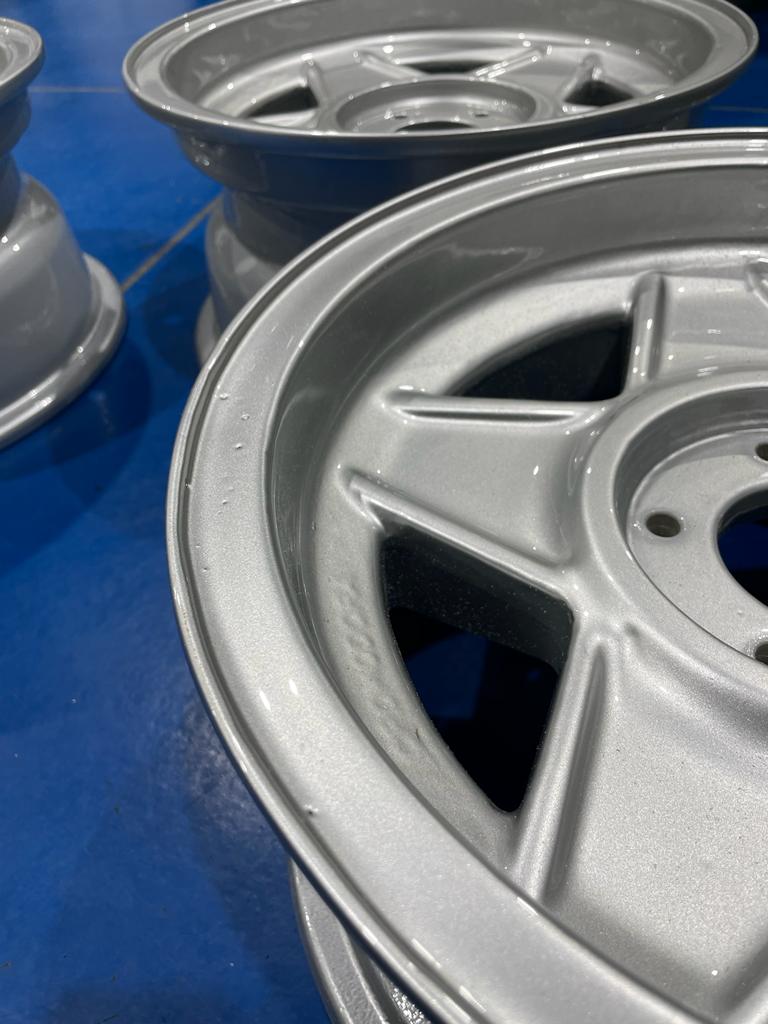
The Bridge Classic Cars workshop here in Pettistree, Suffolk has had an incredible delivery. A set of refurbished genuine Ferrari Daytona wheels. These will be
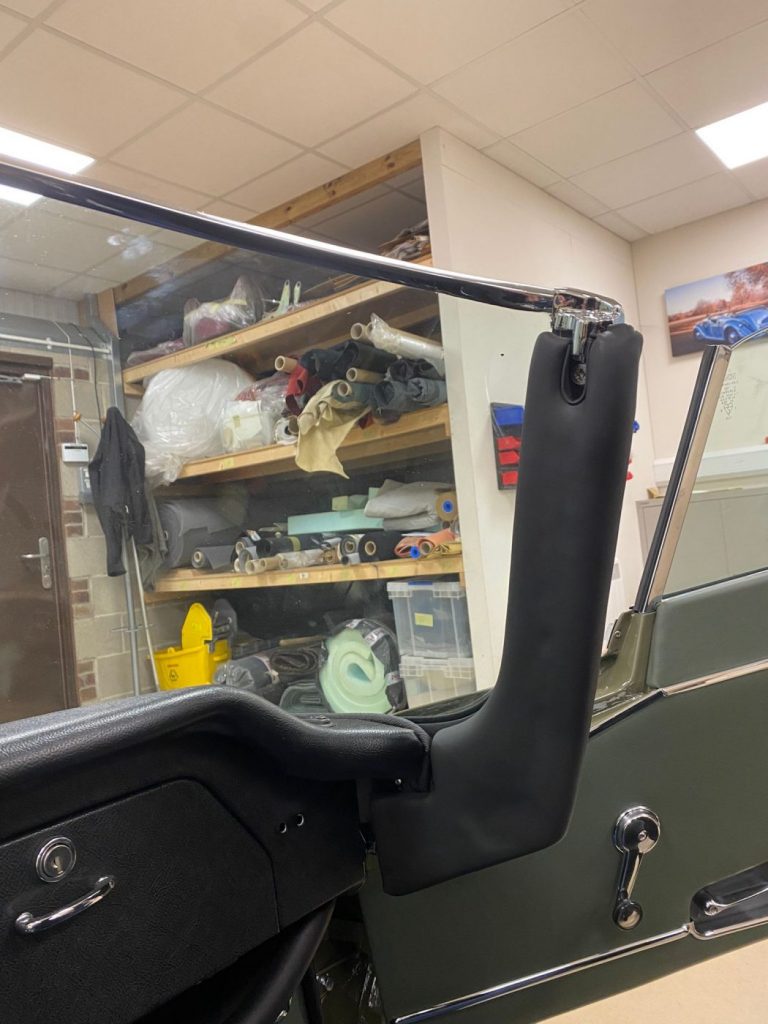
Brian in the Bridge Classic Cars in-house trim shop has been continuing on his highly skilled work on the interior of Fern Grey, the 1973
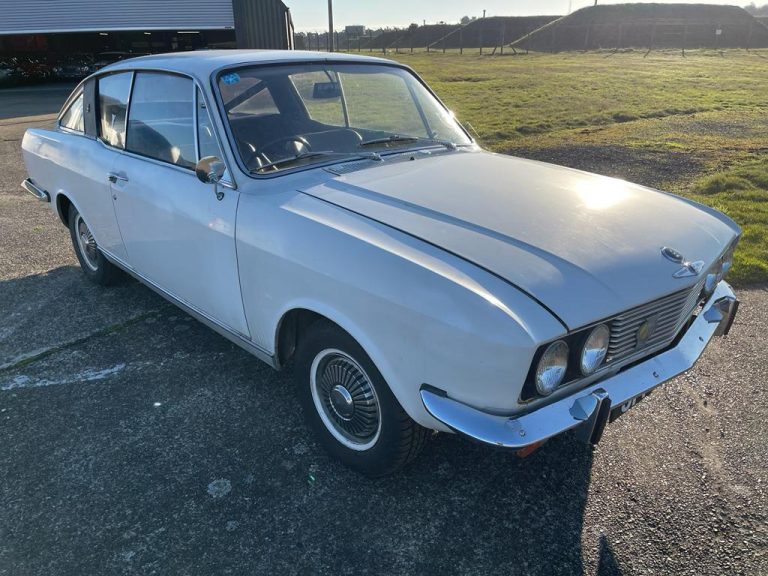
Bridge Classic Cars have acquired one of the most complete, original and low mileage Sunbeam Rapier’s that we have ever seen or known of. This
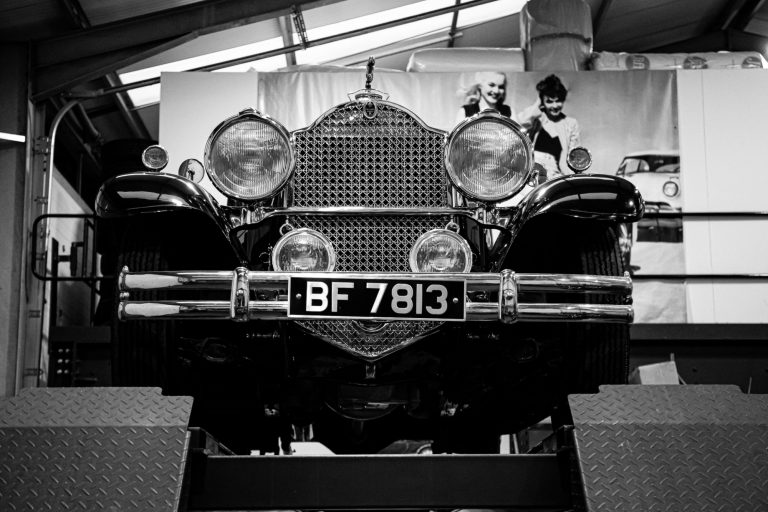
The vast, imposing and elegant figure of the 1930 Packard 740 Waterfield Convertible is now present in the Bridge Classic Cars workshop. This pre-war icon
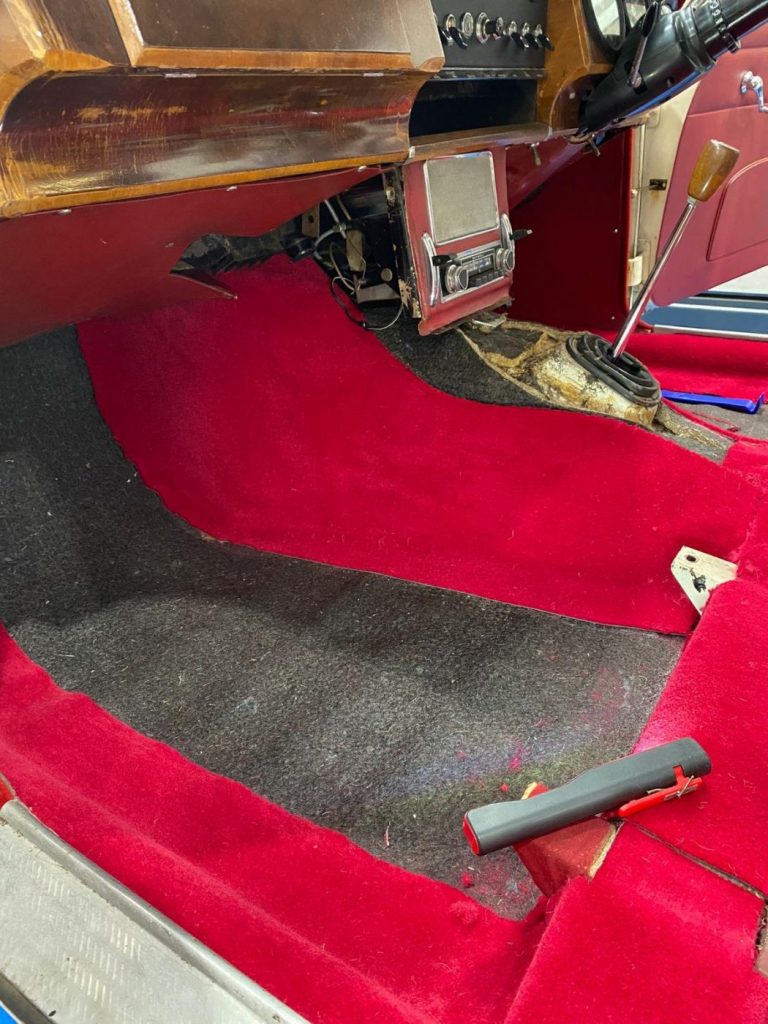
While the seats were removed from the 1968 Jaguar MkII 2.4 which is in the Bridge Classic Cars workshop, our in-house trim expert, Brian, could
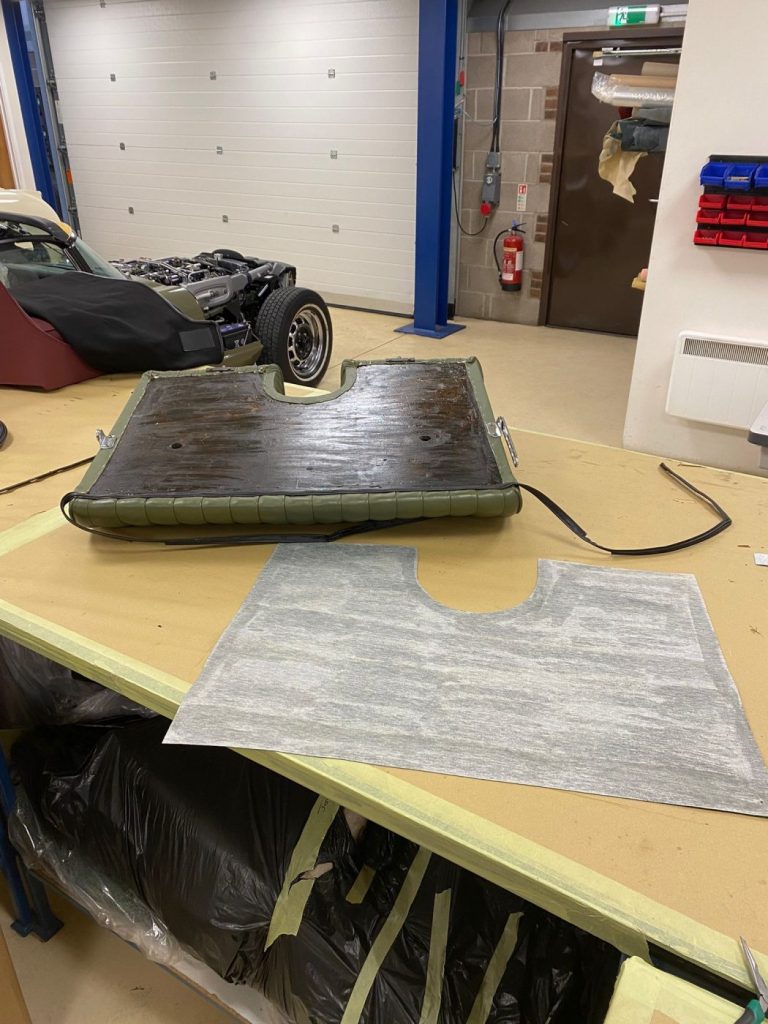
We love the 1934 MG PA Midget here at Bridge Classic Cars. Whilst work is continuing on the classic sports car in the workshop, our
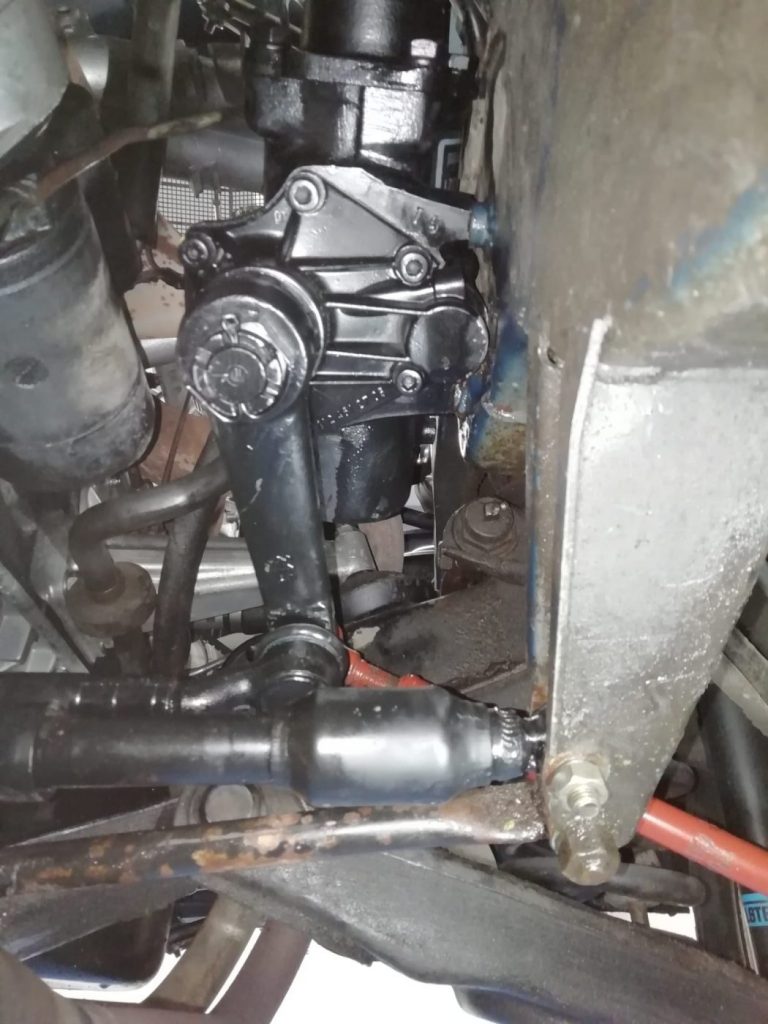
The steering box for the stunning 1966 Mercedes 250SE W111 Coupe is back at Bridge Classic Cars after being refurbished by a local specialist. Now,
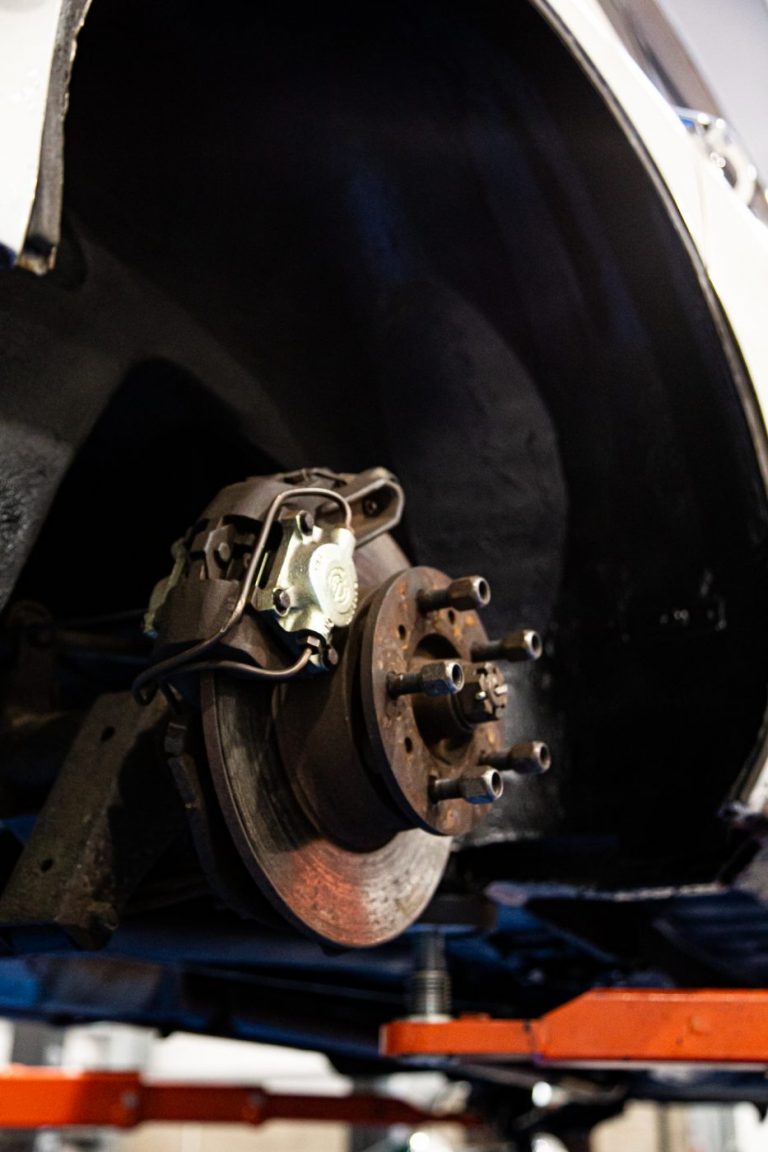
Part of the work carried out on the 1968 Jaguar MkII 2.4 by our in-house technicians here at Bridge Classic Cars was protecting the underside
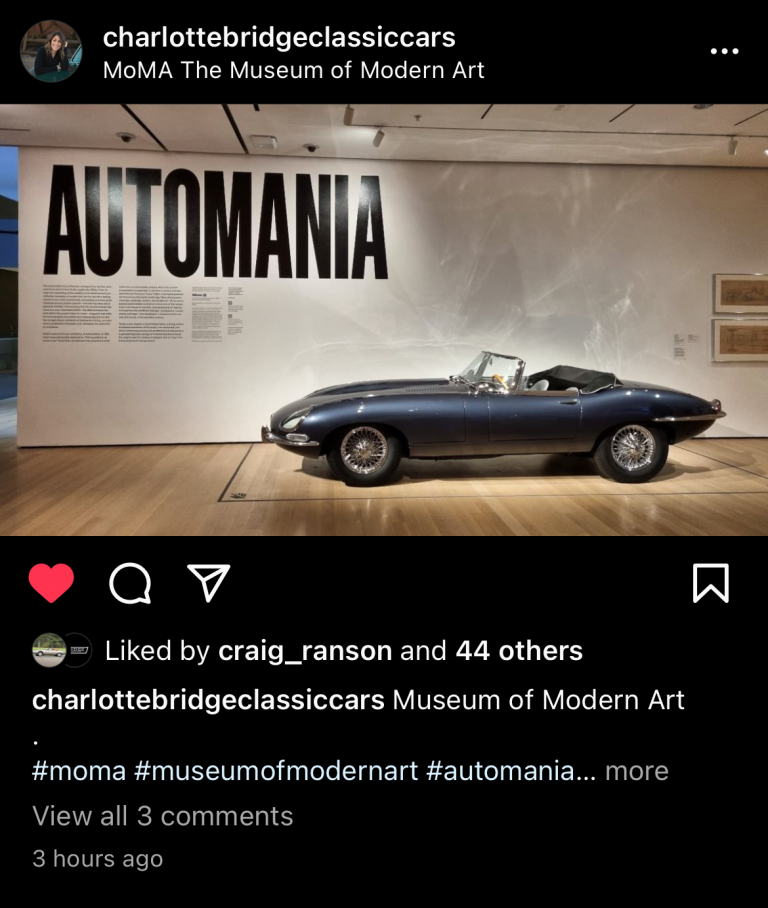
Charlotte, our Bridge Classic Cars Competitions presenter, has been off on holiday but she’ll always manage to find something cool and classic for us back
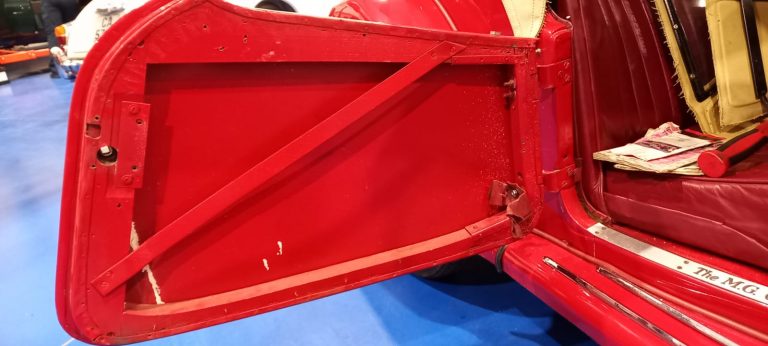
Jon, one of the in-house restoration experts here at Bridge Classic Cars has spent some time working to get the doors on the 1954 MG

The bright winters sun fell across the small, brightly coloured sports car as it sat on the south loop. The harsh highlights bounced off every
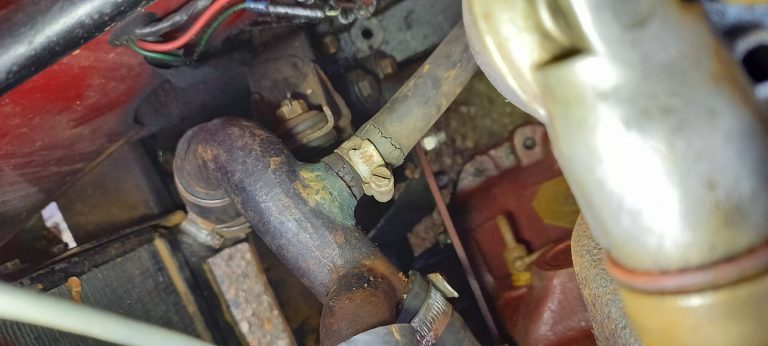
The Bridge Classic Cars in-house restoration teams have been inspecting and assessing the 1954 MG TF after getting the car started. Our technician Jon had
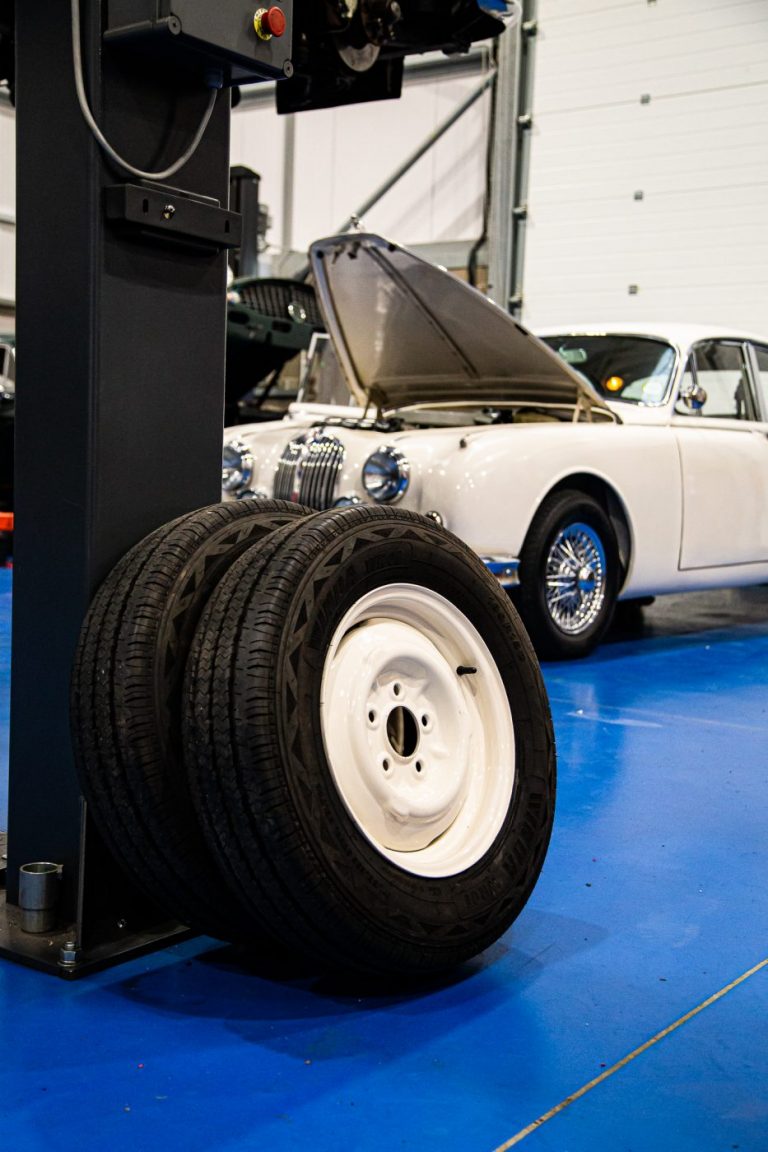
As work continues of the 1968 Jaguar MkII 2.4 in the Bridge Classic Cars workshop, our friends over at Tyre Assist in Ipswich have been
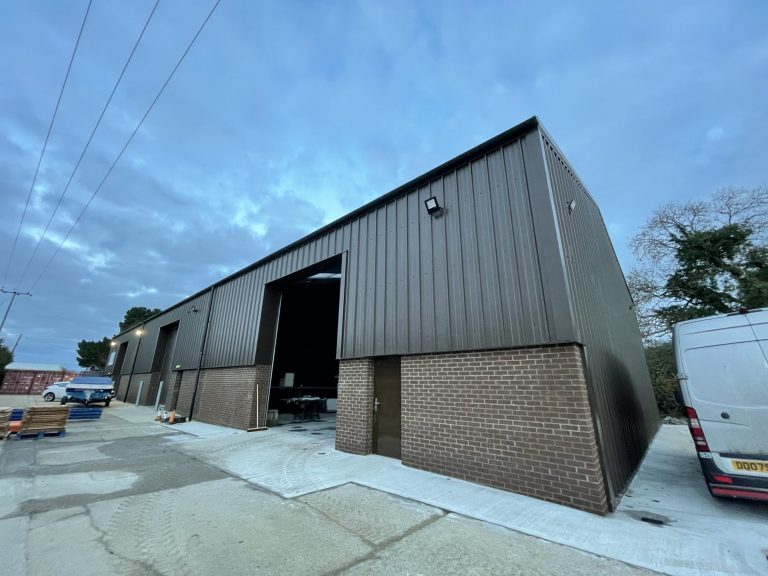
There’s been a hive of activity in recent weeks around the new extension on the Bridge Classic Cars workshop in Pettistree, Suffolk. The new ramps
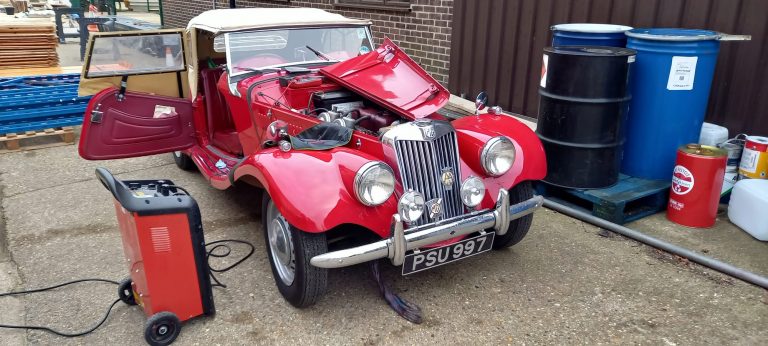
This absolutely stunning 1954 MG TF has got a bit of a starting issue. So, it has been bought in for the amazing Bridge Classic

Our in-house trim shop at Bridge Classic Cars are well versed with the interiors of the majestic Jensen 541. So, with the fronts of the

She was the inspiration behind the name Lotus. A nickname from her husband. A powerhouse alongside its enigmatic founder and adored by all who knew
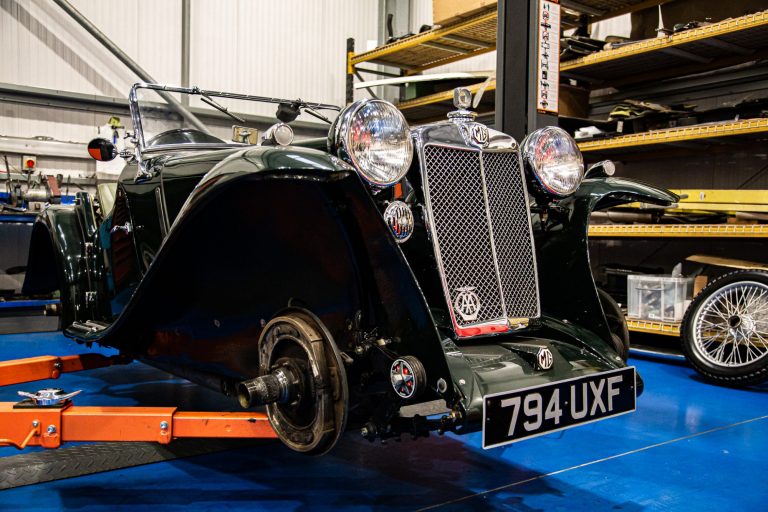
The 1934 MG PA Midget which belongs to our Director, Gordon, is in the workshop for our in-house teams to tackle the next jobs. The
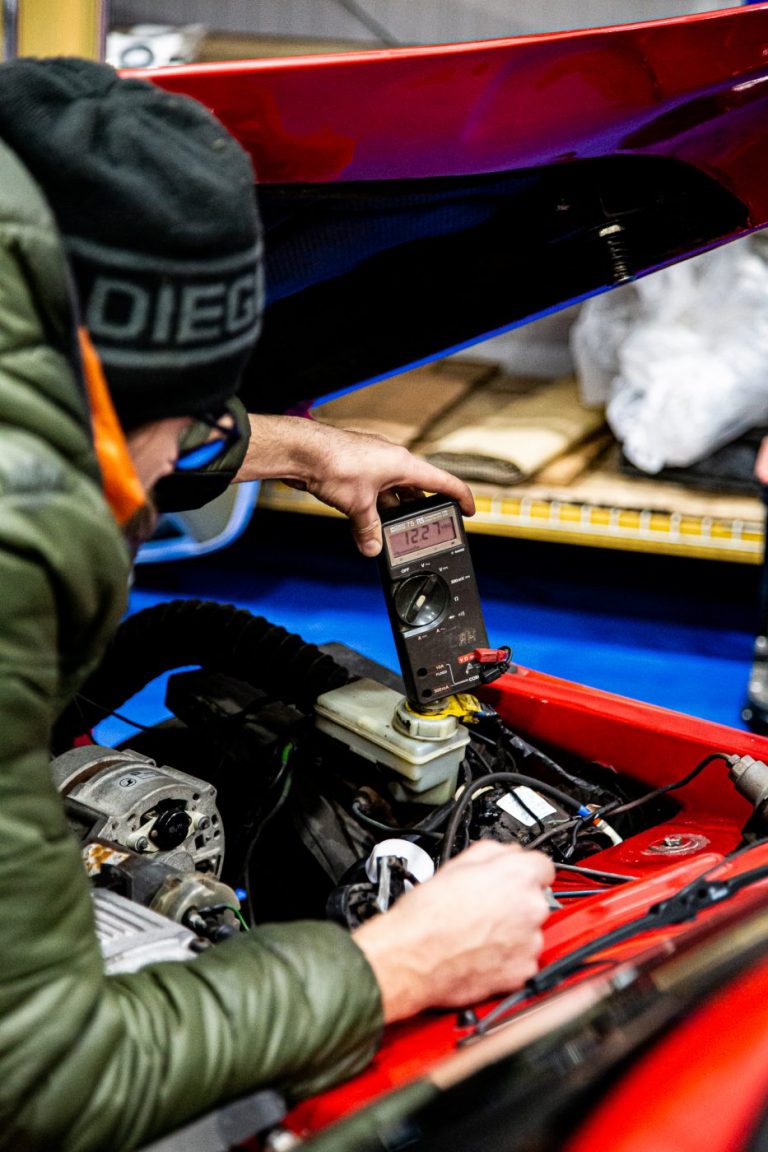
The 1989 TVR S2 which was won through Bridge Classic Cars Competitions has left the secure storage facility, The Hangar, on its way to its
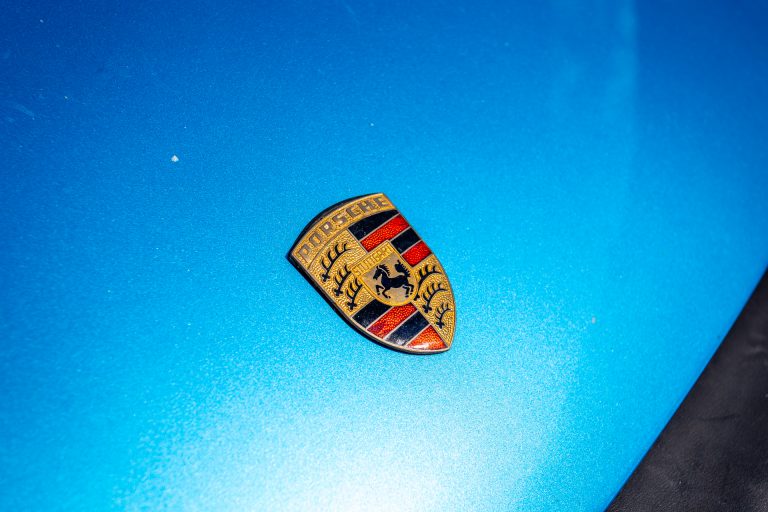
James Dean was one of the brightest stars of 1950s Hollywood. With dashing good looks and an air of charm and ruggedness, he captured the

It’s been a pleasure having this 1968 Jaguar MkII 2.4 in the Bridge Classic Cars workshop. Our in-house restoration technicians have been hard at work

The 1934 Riley Lynx is in the Bridge Classic Cars workshop today to begin work on the list of jobs that need doing on this
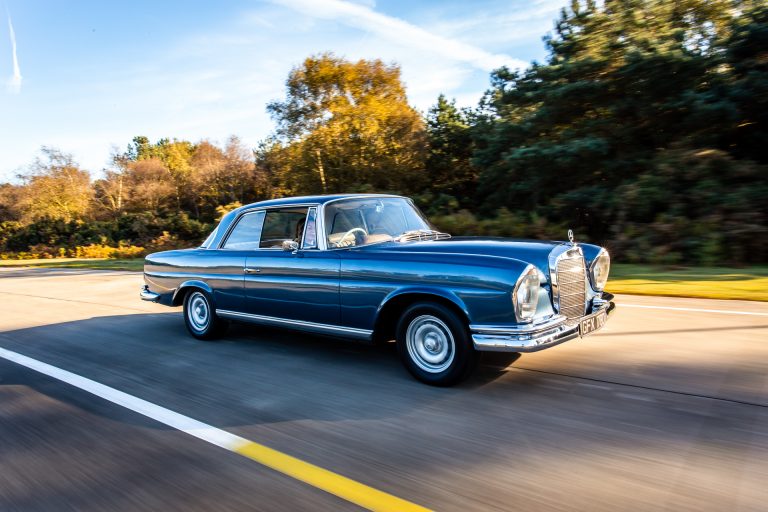
With Christmas only just around the corner, Bridge Classic Cars Competitions is giving you a little stocking filler. Each day on the run-up to the

Our 1976 Mercedes Benz 350SL is back from Derrick Wells, a local Mercedes Specialist, to have a look into some electrical issues with the car.

Over the weekend, Gordon (one of our directors) has been working on installing the newly painted headlight buckets to his 1934 MG PA that is

The Bridge Classic Cars technicians have been working on getting the electrical side of the Glastron Sea Ray up to scratch with a new battery

The next job to be done on the 1968 Jaguar MkII 2.4 by Bridge Classic Cars is to replace the steering coupler. This will help
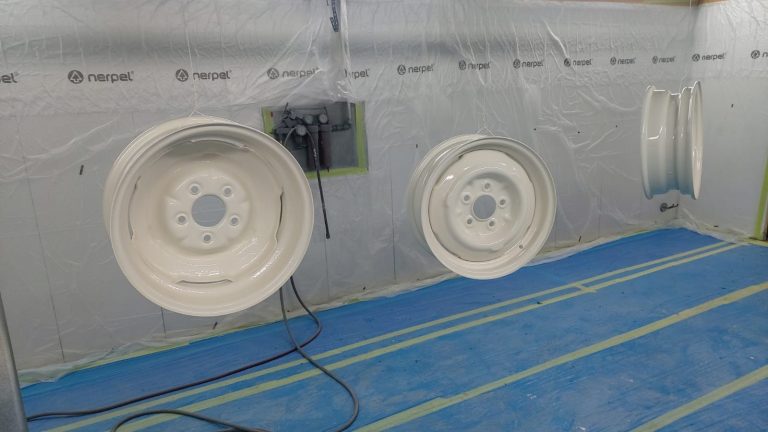
One of the jobs to be done on the 1968 Jaguar MkII 2.4 was to paint the wheels to a colour matched off white, just
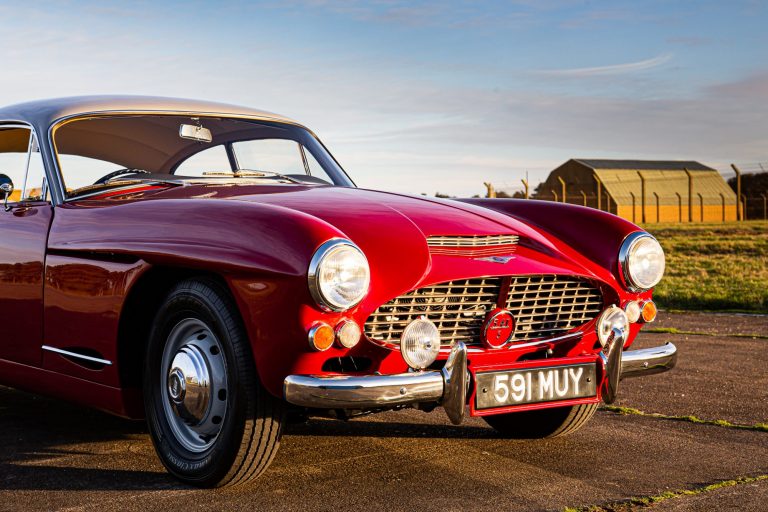
If this isn’t one of the most beautiful cars then we don’t know what is. Finished in a beautiful shade of red with a grey
It’s always a pleasure to work on cars like the 1930 Packard 740. This particular Packard has been awaiting some specialist parts from the US but whilst we get them sorted in our workshop, the car itself is in our state of the art in-house paint booth.
Alan and Chris, our in-house paint and body experts, have been working on assessing and preparing the maroon wings of the pre-war giant. Carefully, Alan has sanded back the affected areas of the car to get them ready for primer and eventually their colour coats.
After the primer has dried, Chris and Alan will work on getting the surface level and ready for the colour. Ensuring the best finish on the paint and no imperfections in such a large panel.
The Bridge Classic Cars workshop here in Pettistree, Suffolk has had an incredible delivery. A set of refurbished genuine Ferrari Daytona wheels.
These will be fitted to the 1979 Arrow Ferrari Daytona which is undergoing a thorough and complete restoration by our in-house restoration teams. These wheels have been refurbished which must be done by specialists due to their magnesium construction.
This is going to be an amazing addition to the car once the restoration is complete by the team.
Brian in the Bridge Classic Cars in-house trim shop has been continuing on his highly skilled work on the interior of Fern Grey, the 1973 Jaguar E Type Series III Roadster.
Brian has been working on test and final fitting the various small trim pieces onto the car. One of the big jobs is making sure the recently finished dash and windscreen trim to fit and flow correctly across the front of the interior of this stunning sports car. With the pieces in their final place, Brian could begin working his way towards the back of the car.
Brian also worked on the soft top where it meets the windscreen trims to ensure all of the trims for the soft top also worked alongside the various windscreen pieces. Any adjustments or refinements could be completed piece by piece to get the best fit for every different aspect of the interior.
Then, in the rear of Fern Grey, Brian began to get the new rear panels into place and make sure they perfectly fit around the hinges and mechanism for the soft top while up, but also when it is folded down into place.
As you can see, its full steam ahead on Fern Grey in the trim shop! And it is looking fantastic.
Bridge Classic Cars have acquired one of the most complete, original and low mileage Sunbeam Rapier’s that we have ever seen or known of. This 1969 Sunbeam Rapier is finished in white with a black interior and still holds many of its original trims, panels and parts.
The car was bought new by the previous owner’s aunt for her 80th birthday in 1969 as a gift to herself on such a milestone. She then proceeded to use the car for the next 13 years until it finally went into long term hibernation when the driver turned 93 years old. After the car had been docile for nearly 10 years, the family drug the Rapier out and got it running again in order for it to take it on a rally to France with a reported round trip of around 1200 miles achieved with no problems – An amazing story for such an amazing and rare car to see these days. And when you think the odometer has only just surpassed 27,000 miles in 52 years.
The car, as stated, is in very original condition. Only records and evidenced are small Bodywork repairs possibly done in period and minor mechanical changes either routine or completely necessary throughout the car’s driving life.
The car doesn’t appear to have any form of rust anywhere on the body (and especially the strut towers). The engine, however, is in an unknown condition but we are confident that with a small amount of effort and perhaps parts the glorious 1725cc 4-Cylinder would fire into life once more.
If you would be interested in owning this incredible piece of British sportscar history and a true survivor car. Please get in touch with the Bridge Classic Cars team by either calling us on 01473 742038 or Emailing Us at info@bridgeclassiccars.co.uk
The vast, imposing and elegant figure of the 1930 Packard 740 Waterfield Convertible is now present in the Bridge Classic Cars workshop. This pre-war icon has been stored at our secure and private classic car storage facility, The Hangar, whilst the in-house restoration teams waiting for some specialist parts.
Now, these have arrived, the teams can begin work again on the glorious tourer.
Expect to see much more very soon on the incredible 1930 Packard 740 here on the Bridge Classic Cars news page.
While the seats were removed from the 1968 Jaguar MkII 2.4 which is in the Bridge Classic Cars workshop, our in-house trim expert, Brian, could begin work on retrimming the floors and installing the sound deadening into the floor of this classic Jaguar.
Previously, Brian had stripped out the floors of the car in our trim shop in preparation for the welding repairs needed. Now, Brian could begin his work getting the inside of the car looking as good as the outside. Using original style sound deadening, Brian laid the material into all of the areas that can be affected or are known for transmitting sound into the cabin. Using a series of specialist trim tools, Brian managed to neatly secure the sound deadening into the car. This, allowed Brian to carry on to the next phase of the interior in the 1968 MkII 2.4.
Next up, was getting the carpet panels in the least accessible places throughout the interior. Trimming the rear seat edges, driveshaft tunnel and seat cross members in the stunning, vibrant red which was closely matched to the original pieces. Brian also hand trimmed the gearbox tunnel as well. Using the original pieces as a template to work from but would trim and adjust the pieces to ensure the best fit and finish once all of the accompanying trim has been fitted.
We love the 1934 MG PA Midget here at Bridge Classic Cars. Whilst work is continuing on the classic sports car in the workshop, our in-house trim expert Brian has the seat in the trim shop.
Underneath the driver’s seat, the original leather liner and edging were missing. No problem for Brian and the trim team. Brian made the new piece from high-quality black leather and then hand made the edging which surrounded the outer edge of the seat base.
Our trim shop do an amazing job. Brian’s work really finishes off the seat from the 1934 MG PA, but expect to see a lot more on this car in the coming weeks here on the Bridge Classic Cars news page.
The steering box for the stunning 1966 Mercedes 250SE W111 Coupe is back at Bridge Classic Cars after being refurbished by a local specialist. Now, it’s time to get it back into the car ahead of tonight’s live draw!
Paul, one of our in-house restoration technicians, was given the task of getting the classic Mercedes pointed in the right direction. Carefully pull rechecked the condition of all the splines and arms to make sure once the new steering box went in, it would work perfectly and only add to the experience of driving this incredible classic German coupe.
With the box fitted up into the car and everything tightened, rechecked and tested it was Paul’s job to road test the car and make sure everything was working just as it should. Success! this historic piece of automotive style, luxury and engineering was all set to find it’s new owner later this evening.
Part of the work carried out on the 1968 Jaguar MkII 2.4 by our in-house technicians here at Bridge Classic Cars was protecting the underside of the car.
Dave, one of our in-house restoration technicians, began by prepping the entire underside of the car and the wheel wells ahead of the undersealer being applied. The preparation before this is done is crucial to make sure the treatment has a clean and even surface to work on and build off.
After it had been thoroughly cleaned down, Dave began the process of applying the sealer to protect the car from the elements and whatever road grime may lay ahead on its adventures with its owner.
Charlotte, our Bridge Classic Cars Competitions presenter, has been off on holiday but she’ll always manage to find something cool and classic for us back home. This time, she found a familiar friend in the Big Apple.
Whilst in New York, Charlotte went to MoMA (Museum of Modern Art) and one of the exhibitions was to do with AutoMania and what better way to sum that up than with a gorgeous early E Type Droptop. A car we here at Bridge Classic Cars have an undeniable soft spot for and definitely deserves its place in a museum dedicated to modern works of art.
Hope you had an amazing time Charlotte! but you’ll all be able to see her tomorrow night for the live draw of the Mustang and the Mercedes 250SE. There is still time to get your tickets!
Click the link below for your chance to win your very own dream classic.
Jon, one of the in-house restoration experts here at Bridge Classic Cars has spent some time working to get the doors on the 1954 MG TF to fit and close properly.
Firstly, Jon removed the door card from the classic sports car where it was then given over to one of our in-house trim experts, Kath, to repair. Whilst this was being done, Jon got to work on the doors. The first thing Jon noticed was that the spot welds that attach the door skin to the frame had popped and allowed the door to not sit level. So, Jon quickly spot welded the door skin back on before beginning work on the hinges.
Jon, upon inspection, noted that the lower hinge of the door had too much movement. So, Jon made up a spacer to sit between the door and hinge allowing a much tighter fit and better alignment between the door striker and the hinge.
Whilst Kath in the trim shop had the door card, it was decided to create a new check strap for the door in as close of a match as possible to the existing leather.
While waiting for the door card and check strap, Jon began work on adjusting the strikers and hinges so the door would shut evenly and level. With some small modifications needed to one of the latches, everything was eventually right in place to line up perfectly for the little sports car.
The bright winters sun fell across the small, brightly coloured sports car as it sat on the south loop. The harsh highlights bounced off every surface that happened to get in the way of its rays. But, it couldn’t have looked much better.
As the car warmed up outside of The Hangar, it was in incredible condition. Having been obviously adored by its previous owner, the Spitfire’s large and vintage dials began to swing their way towards the middle which gave Freddie the signal that this classic sports car was ready to head down the runway towards its photoshoot. The paintwork was vibrant and shimmering in the December sun, just adding to the magic of this stunning car.
This is the 1972 Triumph Spitfire and it is the latest in the line of prizes from Bridge Classic Cars Competitions. And it could be all yours! Bridge Classic Cars Competitions gives everyone the chance to own their dream classic car just by buying a ticket.
And that is exactly what you could enjoy with this amazing classic Triumph.
Head over to the Bridge Classic Cars Competitions now and enter for your chance to win this stunning 1972 Triumph Spitfire IV.
The Bridge Classic Cars in-house restoration teams have been inspecting and assessing the 1954 MG TF after getting the car started.
Our technician Jon had a look at each component within the engine bay, and that includes all the hoses. Upon inspection, Jon found one of the heater hoses had become very deteriorated over time and for the sake of safety will need to be replaced. The condition of the hoses is crucial for the longevity of any classic car’s engine so this is a must-do job.
As work continues of the 1968 Jaguar MkII 2.4 in the Bridge Classic Cars workshop, our friends over at Tyre Assist in Ipswich have been out to do their part on the project.
Previously, our in-house paint expert Alan had worked his magic on the wheels of the MkII to match the colour of the wheels to the car. Now, with the paint dry and cured, they could be handed over to Graham to fit them up with new rubber.
Thanks to Tyre Assist being mobile, they come out with their state of the art equipment to mount, balance and test the new tyres we have fitted to our classics. So, our customers can be safe in the knowledge that even the specialists we use work to the same exacting standards that our in-house technicians work to on our projects.
There’s been a hive of activity in recent weeks around the new extension on the Bridge Classic Cars workshop in Pettistree, Suffolk.
The new ramps and edging have had their concrete laid and cured by the builders meaning we will be able to get any car into the extension regardless of its ride height and if it needs pushing, the angle isn’t too bad for our technicians!
The cladding has also been finished all the way around the building, and seamlessly blends into our existing workshop just next door. It’s our first purpose-built, from scratch building so we are very proud and excited about this project.
The other big change is that the doors have started to go into the building. Our colour-matched brown fire door is securely put into the building to the exacting building codes it must meet and the large roller doors have begun to be installed into the building this week.
It’s all coming together on the Workshop Extension and we’re very excited to show you more on the build as it progresses.
This absolutely stunning 1954 MG TF has got a bit of a starting issue. So, it has been bought in for the amazing Bridge Classic Cars in-house restoration technicians to get to the bottom of it.
The job of looking into why the TF wouldn’t start was given to Jon, one of the amazing in-house technicians who has a wealth of knowledge and experience when it comes to the overall health of a classic car. After troubleshooting and checking the various systems responsible for starting this plucky little sports car and putting the car on a deep cycle charge, Jon found the start solenoid had an internal fault. He also found the cable that controls the solenoid needed adjusting as well.
While adjusting the starter cables, Jon noted the dash would actually move with the cable so to make sure the adjustment was correct and working as it should he resecured the dash into the car and retested. After this, the MG TF started every time with little effort from this nearly 70 year old sports car.
Our in-house trim shop at Bridge Classic Cars are well versed with the interiors of the majestic Jensen 541. So, with the fronts of the 1956 Jensen 541 seats complete, it was time for Kath to turn her attention to the back of the other seat.
Using the other completed seat for reference, Kath began by carefully making a template of the back of the seat. Each of the seat buckets was made by hand back in the 1950s so they are slightly different from one to the next, so to ensure the best fit and finish Kath makes each template by hand. Once this was complete, she could begin to transfer the template onto the lining and the hide that would envelop the fibreglass seat.
After this had been carefully glued and set to the backs and bottom of the seat, Kath began to work on the seat base and cushion. Again, every single piece of the seat is handmade by our in-house trim shop so even the cushions are bespoke to this car. Millimetre by millimetre, Kath perfected the fit and shape of the foam and once that was fair and even, she attached it to the seat base. Then, in the matching hide, Kath retrimmed the cushion and seat base ready to put into the seat.
With this complete, both seats are now ready for when the rest of the car is finished and handed over to the trim shop for fitting.
She was the inspiration behind the name Lotus. A nickname from her husband. A powerhouse alongside its enigmatic founder and adored by all who knew her. Today, we learned of the passing of Hazel Chapman. Wife of Lotus Founder Colin Chapman.
Although, she had a career away from her husband’s reputation. Hazel was an accomplished driver in her own right and was a sharp-witted and savvy businesswoman who many believe was a key influence on the development and birth of Lotus Cars. To the point where Lotus Cars actually began in a garage owned by Hazel’s parents in North London where the Mk1 was born. However, during Colin’s mandatory time in the RAF, Hazel would take over the actual construction of the next generation, the Mk2.
During her time surrounded by some of the greatest Formula One drivers of all time including the likes of Clark, Senna and Andretti, Hazel formed a bond and love for her drivers and everyone involved in the team had nothing but respect and adoration for Mrs Chapman by all accounts. She was also instrumental with setting up Dog House, an all-female motorsport club run for and by women to support the interests of the blossoming female driver movement.
However, after Colin Chapman’s untimely death in 1982, she began to take more of a back seat in the running of Lotus Cars. But even to this day, Lotus carried on the tradition of Hazel Chapman signing off every single road car all the way from the beginning to the introduction of Evija.
Hazel Chapman was a key and influential figure in not only the history of Lotus Cars but of the enthusiasm around driving and its accesibilityno matter of gender or age. A true trailblazer and pioneer.
From all of us here at Bridge Classic Cars, we wish to send our deepest condolences to all those who knew this incredible woman.
The 1934 MG PA Midget which belongs to our Director, Gordon, is in the workshop for our in-house teams to tackle the next jobs.
The first is our technicians have removed the hubs on the classic sports car so that our amazingly talented in-house paint team can get them to look as good as new for the car. This also gives our restoration technicians the chance to inspect and clean the hubs and spindles on the MG.
Another job on the list was to look into the battery of the car. Our team have been working on a way of better securing it into the car.
The 1989 TVR S2 which was won through Bridge Classic Cars Competitions has left the secure storage facility, The Hangar, on its way to its new home with its new owner, Jarlath. But, before it goes anywhere our in-house restoration technicians just want to check something.
When the car was pulled out of The Hangar, the alternator light was showing on the dash. This unit had been replaced during its preparation so Tom and John decided to go through and double-check the charging system. Methodically, our restoration teams worked through each component and wire.
After investigating, John and Tom found that one of the connectors had been slightly dirty/corroded was the cause of the light on the dashboard of this vibrant red sports car. After this had been cleaned and tested, all was ok and ready for delivery.
James Dean was one of the brightest stars of 1950s Hollywood. With dashing good looks and an air of charm and ruggedness, he captured the hearts of movie-goers within the span of his tragically short career. What the public may not have known, was his love of speed. During his short career, he had amassed an impressive stable of sports and racing cars which he would regularly exercise on the public roads which would sadly be his undoing many believe.
On September 30th 1955, Dean had intended to take his latest purchase to a race in Northern California. However, before he had even begun his journey there were signs of something impending. Famously, the legendary actor Alec Guinness would meet Dean shortly after he had taken delivery of his Porsche Spyder. Guinness would later comment in his diary that the car felt ”ominous” and ”looked sinister” while at the time claiming to have said to the young actor ”… if you get in that car, you will be found dead in it by this time next week”. A sense of foreboding drove itself deep into the core of Guinness as his friend laughed it off, got into his car and drove away.
The car had been painted by a legendary signwriter and car stylist named Dean Jeffries who emblazoned its flanks with the racing number 130 and the now infamous nickname for the sports car, Little Bastard. This was while the car was being prepared by James Dean and his mechanic Rolf Wuterich in anticipation for that weekend’s Salinas Sports Car Races in California. Although the original plan had been to tow the 550 Spyder to the race, it was decided it would be street driven to the race to give the young actor more time behind the wheel and to help break in the new engine before it would be pushed even harder on the race track over the coming weekend. On the Friday, the team set out with legendary Hollywood stuntman Bill Hickman driving his pickup truck and trailer trying to keep up with the exotic European racer. Dean was at the controls of the 550 while his mechanic Wulterich sat next to him to keep an eye on the health of the delicate race car.
During that trip, Dean would be pulled over by the police and issued with a speeding ticket. Another omen that this trip maybe should have been put on its trailer for the rest of the journey. However, after taking the ticket, Dean fired up his Porsche and kept going…
Out on the flat desert plains sits an intersection. The convergence of two stories would happen in this space and this time which would change history from that point on and began the legend of the Dean Spyder.
While turning off the highway at around 85MPH, Donald Turnupspeed’s Ford Tudor suddenly turned into the path of the small, fast Spyder. Although the 550 Spyder is known for being lightweight and not particularly overpowered, it managed to send the Ford Tudor almost 40 feet back from the scene of the impact. Wulterich was thrown from the car on impact, and the young actor who had been at the helm at the time of the accident had passed before they reached the hospital with his body at 620PM that night.
Despite the insurance company investigating the crash and then assessing the car, determining it to be a total loss, it was actually bought from a salvage yard and parted out for various street and race cars. But, it would appear something would follow any pieces related to the events of September 30th 1955.
The man who bought the remains of the 550 Spyder was an avid racer himself. William Eschrich raced a Lotus IX in local California sports car races, but from the remains of Little Bastard he would remove the engine for his own use. With so many spares he would also lend the gearbox and some of the suspension parts to his friend and fellow racer Troy McHenry. Here begins the notion of a curse attached to anyone or anything associated with the Dean Spyder. In the 1956 Pomona Sports Car Race, Eschrich and McHenry were competing. When out of nowhere, something went wrong. Eschrich’s Lotus crashed and completely destroyed the car but its owner and driver would survive the horrific impact. However, his friend McHenry would not be so lucky. His car lost control and struck the only tree on the track, killing the driver. So, began the whispered rumours of a curse…
What was left of the Porsche Spyder was quickly sold on. A legend in the LA car scene, George Barris, bought the car with promises of restoring the car for prosperity. However, even the self-proclaimed King of the Kustoms couldn’t save it. But, the notorious hypeman used this to his advantage. He traded in on the horrific beginnings of its curse, the death of Dean. Barris loaned the car to the National Safety Council to be used as a showpiece reminding people of the dangers of speeding and driving unsafely on the public roads. From 1957 until 1959, the mangled wreckage of the Porsche was paraded around for on-lookers to see and be reminded of what happens if it all goes wrong.
In 1959, while in storage, there was a massive fire at the facility. However, Little Bastard was barely hurt. A melted tyre and some scorch marks on its silver bodywork were the only marks yet the building around it was severely damaged. Along with that, before the fire, some tyres were taken off the Porsche and put onto one of Barris’s customers’ cars. Within a few miles, the tyres which had been in perfect condition before mysteriously blew and caused the car to violently career off the road nearly injuring the driver.
From this point, there are several unconfirmed stories about Little Bastard. Stories of it breaking loose from its shackles while being shown at exhibits and injuring bystanders to it falling from its transport and killing the driver responsible for its shipment to and from an exhibition. However, what is known is that at some point in 1960, Little Bastard simply disappeared…
Reportedly, the car had been at an exhibition in Miami for the National Safety Council. After the show was over the car was loaded into a sealed railway container to be shipped out west back to its home of Los Angeles. However, when its transport team arrived to take the car back to it’s storage space, Little Bastard has simply disappeared into thin air. Allegedly the seals on the boxcar were still intact when it was opened by the team and no marks or any evidence was ever found of just how the most famous car wreck of all time had simply vanished. Some claim that Barris, had a hand in the car disappearing, spinning the tale in order to keep the cars now-notorious reputation alive and keep people interested in coming to see the alleged haunted/cursed remains of the 550 Spyder. However, right up until his recent death, Barris denied all knowledge of where the car might be. Even going as far as to issue a $1m reward for any information which may help them find the car.
Wherever the car is, we hope it is finally at peace with its first and only driver in that great racetrack in the sky.
It’s been a pleasure having this 1968 Jaguar MkII 2.4 in the Bridge Classic Cars workshop. Our in-house restoration technicians have been hard at work on the car getting through the list of jobs requested by its lucky owner.
Our technician Dave has been working on getting the reworked front seats safely and securely back into this classic saloon car. Since the car has also been in our workshop where our master trimmers have been working their craft on the inside of the big Jag. Dave has been carefully working around the incredible work that has been done by Brian and Kath our trimmer so as to not damage or mark any of their work.
With the front seats being so important, Dave has been making sure that all the hardware used to secure them to the car is in the best condition and all the threaded holes are clear and clean-cut to make sure they can be tightened down accurately. So, with that, Dave will get the front seats into the car and then the team at Bridge Classic Cars can work on getting the other jobs on the 1968 MkII 2.4 done.
The 1934 Riley Lynx is in the Bridge Classic Cars workshop today to begin work on the list of jobs that need doing on this amazing classic tourer.
First off for the Riley, is a full service and set up to make sure it’s running in perfect condition. For this, our in-house restoration technician Jonn has begun to inspect and replace the serviceable items on the car. Many will purely need cleaning up as they are in amazing condition but it will still be thoroughly gone over and serviced by Jonn.
There will be more updates very soon on the Bridge Classic Cars news page.
With Christmas only just around the corner, Bridge Classic Cars Competitions is giving you a little stocking filler.
Each day on the run-up to the big day, we will be giving you a discount on our prizes. With 12 sleeps to go, we’re offering you a 12% discount on tickets. Tomorrow, it will be 11% and the day after 10%, so act quickly to get the best discount.
Simply enter the coupon code ‘XMAS’ at checkout for your discount.
Get your tickets at the Bridge Classic Cars Competitions website and maybe you’ll have something shiny and classic under the tree this year.
Our 1976 Mercedes Benz 350SL is back from Derrick Wells, a local Mercedes Specialist, to have a look into some electrical issues with the car.
Now that it is electrical working exactly as it should, it’s time for our Bridge Classic Cars in-house restoration teams to assess the car and come up with a plan to move forward with. First up, it will be mechanically inspected before moving to the other teams for their expert eyes to look over this incredible classic convertible.
The car has so many amazing and wonderful details it’s difficult to capture them but the original Aztec Gold paint looks incredible in the winter sun.
Expect to see more on this amazing 1976 Mercedes 350SL in at Bridge Classic Cars very soon.
Over the weekend, Gordon (one of our directors) has been working on installing the newly painted headlight buckets to his 1934 MG PA that is having some other jobs done by the in-house technicians at Bridge Classic Cars.
The original headlight buckets were chrome but Gordon want some colour matched units for his new pride and joy. So, with the replacements found they were handed over to our in-house paint and body team to perfectly match the oak green paint already on the car.
With the headlights transferred into the new buckets, they would absolutely phenomenal on this classic sportscar!
Expect to see more on the 1934 MG PA Midget here on the Bridge Classic Cars news page.
The Bridge Classic Cars technicians have been working on getting the electrical side of the Glastron Sea Ray up to scratch with a new battery cut off and some much-needed rewiring.
Jonn, one of our in-house restoration technicians has been going through the electrical systems on the speedboat to check them for operation and for safety. He noted that some replacements and repairs would be needed.
Firstly, Jon installed a new battery cut off switch into the boat so if needs be, all power to the entire boat can be switched off safely at the flick of a switch.
The next job to be done on the 1968 Jaguar MkII 2.4 by Bridge Classic Cars is to replace the steering coupler. This will help to tighten up the loose steering for its owner.
This job is being done by our master tech, Dave. Dave has a huge wealth of knowledge and experience working on classic cars so a job as delicate and crucial as this was given to him. Carefully, Dave began by removing the shaft from the coupler in order to gain access to the bushes and balls inside the steering box. As opposed to some MkII’s that we have worked on in the past, this MkII remains as a steering-box car.
After removing the original parts from the car, Dave began to check the new replacements would work with the car and were correct. Then, it was a case of getting everything back together and into the car. Dave took his time to make sure that every component cleared the steering box and its boot so it remained happy for many years to come.
After the job was complete, Dave manually checked that the box rotated as it should and also meshed together with as little play as possible thanks to the new parts.
There will be more updates soon as work continues on this stunning MkII 2.4.
One of the jobs to be done on the 1968 Jaguar MkII 2.4 was to paint the wheels to a colour matched off white, just the same as the body. So, it was off to the paint shop under the watchful eye of our in-house paint expert Alan.
Finished in a healthy layer of primer, to begin with, the wheels were then prepared to be put in the booth ready for painting. Alan used our state of the art paint mixing computer to find the closest match possible to the existing paint of the MkII in order to get the best match.
Then, with the right amount of paint mixed up and in the gun, it was time to start laying down the first of many coats to get these wheels to look perfect. Alan took his time to make sure the paint fell evenly and was given enough time in-between coats to achieve the best results straight out the gun. And, as you can see the results are absolutely incredible.
If this isn’t one of the most beautiful cars then we don’t know what is. Finished in a beautiful shade of red with a grey roof and camel leather, this 1960 Jensen 541S is definitely stealing the show at The Hangar. It is, of course, Peony Red.
Peony Red is one of the Jensen 541’s that Bridge Classic Cars has had the honour of restoring down to the smallest detail for its very special owner. There isn’t an angle where this car doesn’t look absolutely phenomenal. This afternoon it was transported from our workshop in Pettistree inside the enclosed vehicle transporter to our classic car storage facility, The Hangar. This is where Peony Red will be stored and cared for over the winter months by our in-house restoration technicians until the weather becomes more suited and the temperatures are perfect for driving such an incredible sports car.
While The Hangar was being readied for Peony’s arrival, Nick managed to grab some photos of this truly unique and one-off Grand Tourer in the sun while he could. These photos, couldn’t even do justice to just how incredible this car looks and sounds in the flesh.
Bridge Classic Cars are award winning Classic Car Restoration and Maintenance specialists. Your pride and joy is in safe hands with our expert Classic Car Technicians. Take a look at our awards here.